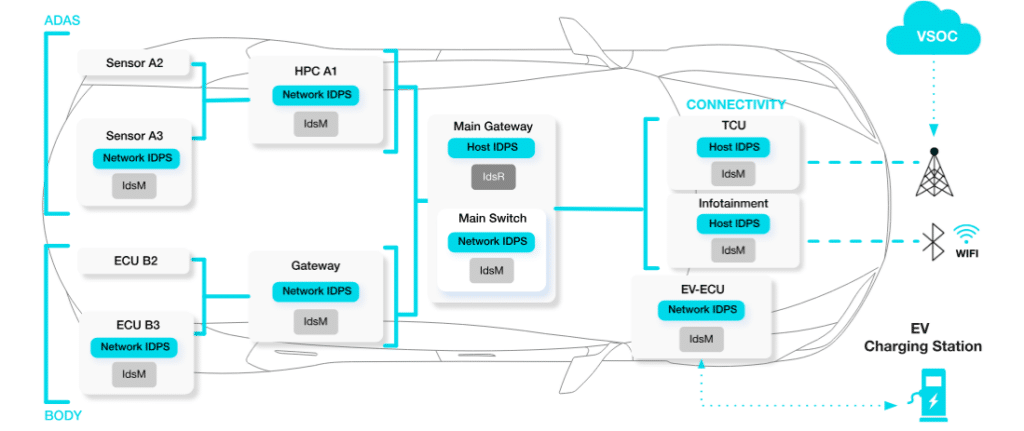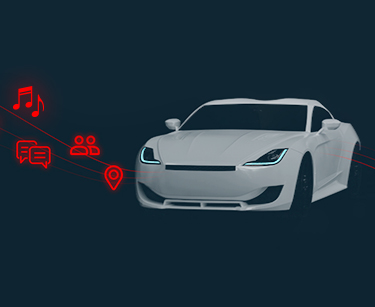

Your car is about to have a relationship with your home
A connected car, a smart home and a smartphone walk into a bar… This could be the beginning of a nerdy tech joke, but it’s not. Another step towards the connection of everything to everything took place recently with an announcement by Samsung Electronics and the Hyundai Motor Group who partnered to create a new lifestyle future where your car is talking to your smart home, and vice versa. Wait. What?
Let’s take a step back, for the sake of those of us who are not tech savvy or early adopters of new technology.
What is a smart home?
Think of digital devices, appliances, controllers and switches in your home. In recent years more and more of these devices have become part of a smart home ecosystem. The TV, the speakers, the doorbell, the air condition controller, the fridge, the list is endless. For starters, these devices can now talk to the internet. But it’s not just about connectivity, the ”smart” part means they leverage sensors to collect local data in real-time, and combine it with the infinite data from the internet in order to act intelligently. Consequently they learn many new tricks – some cool, some useful, some plain bizarre. My washing machine for example knows what kind and how much laundry was put in it, and it communicates this information to the dryer so it will automatically set the optimal program to dry this load. My light switches know my evening lighting preference, and turn on the perfect combination of lights every evening just before sundown. I can unlock my door from my phone’s app even when I’m away. And my window shutters predict an upcoming storm and roll themselves down automatically ahead of time. All these smart devices and switches are connected wirelessly to the internet, and eventually to an app easily accessible on your smartphone.
This may sound like a niche market for technology enthusiasts, but it’s far from it. Some of the biggest names in tech are heavily invested in smart home and smart devices including Google, Amazon, Apple and Samsung, just to name a few. In the past, smart home technology had been expensive and complicated to implement, but it is becoming more and more mainstream.
What is a smart car?
By now you probably heard the term “software defined vehicle”. Tesla is largely credited for popularizing this concept back in 2012 with the Model S. In a nutshell, decoupling the vehicle hardware and software allows a car manufacturer to keep updating the software on a regular basis throughout the life of the vehicle. Not only to fix problems but also to enhance performance, add new functionality and introduce new capabilities. More and more mainstream cars are fully connected these days, not just paired to your smartphone but also to the internet. Drivers can listen to streaming music, podcasts, or online radio, while passengers can stream videos or play online video games. And the concept of “recall” completely transformed. While in the past a recall to fix a safety issue meant driving to the service center and waiting for a few hours for the mechanics to replace a part, not a great experience for the car owner, not to mention the cost to the OEM that could reach hundreds of millions of dollars or more, today many recalls are done as over-the-air updates (OTA), just like the routine updates we all get on our smartphone.
So now that we established the two domains of smart home and a smart / connected car, let’s go back to the latest development – these worlds are now colliding. Or at least starting a beautiful friendship. Samsung and Hyundai are first movers, but this trend will surely be adopted by other players. Specifically, Samsung and Hyundai announced a bi-directional communication between smart homes and connected cars in order to offer new consumer services.
Home-to-car services
Car owners will be able to use their smart home app to control the car from home, such as starting the car and controlling in-vehicle temperature, opening and closing the windows, or checking the charging status. While this could also be accomplished by the connected car’s OEM app, think of the new use cases combining the two ecosystems. Setting the home status to ‘away’ on the smart home app on a cold day can automatically tell your car to get ready for a drive and start the heating.
Car-to-home services
On the flip side, the car could control features inside your home. The in-vehicle infotainment display would be able to control home lights and temperature. But you can think of some smart scenarios as well. For example, unexpected traffic might mean you will be 45 minutes late to get home, so the car can automatically adjust the home air conditioning schedule to save energy. It can also share vehicle information to be displayed on home devices, such as showing the EV remaining battery and driving range on your TV or other smart displays around your house.
So why worry?
In a word – cybersecurity. Connected cars are increasingly becoming targets of cyber attacks. As vehicles are becoming powered by more and more software, offering multiple connectivity channels such as cellular, wifi, and bluetooth, they inadvertently create new attack vectors. Automotive cybersecurity first got industry attention with the famous Jeep Cherokee researcher hacking already way back in 2015.
The constant increase of automotive cyber attacks and publicly disclosed risks and vulnerabilities eventually triggered automotive cyber security regulation, most notably the UNECE R155 regulation, and the international standard ISO/SAE 21434.
Technically speaking, connecting the smart home ecosystem to a vehicle introduces a whole new attack vector. Not just a big one. A huge one. Unlike the automotive industry that is heavily regulated and sets high standards of quality and safety, smart home devices are not there yet. Attention to smart devices cybersecurity is just starting, and as smart devices made by countless vendors become cheap and widespread, it’s pretty much impossible to assess the cyber posture of your smart home ecosystem. But judging from news coverage of vulnerabilities, it’s far from being great. The well known Ring security camera was hacked back in 2019, putting customers at risk. A more recent camera security scandal involves the Wyze webcam when some owners reported that they were briefly able to see feeds from cameras they didn’t own or recognize, which led the New York Times Wirecutter to pull its recommendation of Wyze security cameras after six years of reviews. But smart home security concerns are not limited to webcams. Researchers found that even smart light bulbs can be hacked, and hackers can use them to infiltrate your home wi-fi network and steal personal information.
It’s not surprising that a recent survey showed that Gen Z and millennials are very worried about their smart home devices being hacked. Let’s be honest with ourselves, how much security attention and cyber protection can really be embedded in a $15 smart camera? And it only takes one weak link, one poorly protected smart device, to hack into your entire home network.
Now imagine the consequences of connecting this new ecosystem of on-line smart home devices, appliances and switches, made by countless vendors, and not yet regulated for cyber security, to the vehicle you use to drive yourself and your loved ones around at 75 miles per hour. What could possibly go wrong?
Well one thing that can go wrong is taking over a connected vehicle remotely by exploiting a vulnerability and hacking into a smart lightbulb in your connected home, and from there accessing your vehicle and instructing the cockpit smart assistant to manipulate vehicle functions. Or accessing and stealing personal information, such as where exactly did you go with your car, and how long did you spend there. That’s the home-to-car vector. But also consider the car-to-home vector. If a hacker can compromise a connected vehicle, beyond the consequences at the vehicle level we are now extending the hacker’s potential reach into your home. They could now possibly access home cameras, unlock smart lock equipped doors, manipulate the A/C, and other smart devices.
So what can be done?
The journey to make the car an extension of the home and digital life started a while ago, and the linking of the smart home ecosystem with the connected car is inevitable. It has the potential to shape a new lifestyle and revolutionize the car user experience. But at the same time it introduces major cyber security risks that must be addressed to make this evolution safe for everyone. This reinforces even further the importance of automotive cyber security. From protecting in-vehicle networks with Ethernet intrusion detection and CAN Bus intrusion detection, hardening and protecting host ECUs such as infotainment systems and telematic units, continuous scanning for vulnerabiltiies, through fleet cyber monitoring to detect attacks and respond to risks and threats.

Conclusion
A connected car, a smart home and a smartphone walk into a bar… And if you don’t want this joke to have a disastrous cyber ending, you better make sure your vehicles have the appropriate cyber protection measures in place.
Published: February 8th, 2024










